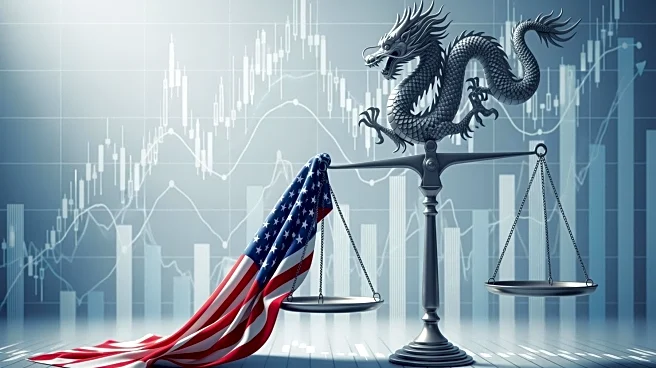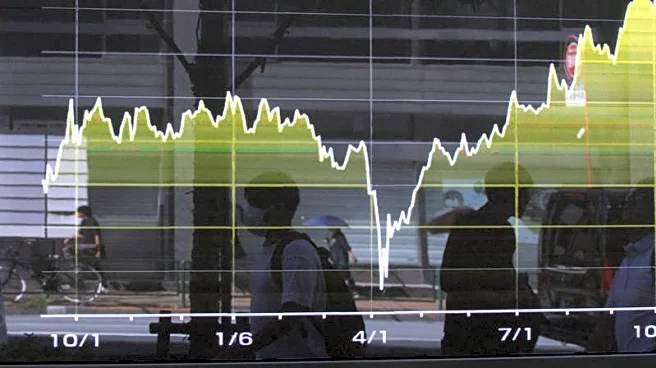What's Happening?
The Nasdaq experienced a significant slide due to various factors, including the easing of U.S.-China trade tensions and profit-taking in high-flying chip stocks. President Trump's recent policy reversal
on tariff threats and the upcoming meeting with China's President Xi Jinping helped stabilize the market. However, Applied Materials' warning about potential sales impacts from new U.S. export curbs to China caused a temporary downturn. Additionally, market jitters over the stability of the truce in Gaza and its economic implications also contributed to the Nasdaq's slide.
Why It's Important?
The easing of trade tensions between the U.S. and China is significant as it impacts global supply chains and investor confidence. President Trump's decision to dial back tariff threats could lead to improved relations and economic stability, benefiting industries reliant on international trade. However, the warning from Applied Materials highlights ongoing challenges in the tech sector, particularly for companies with exposure to Chinese markets. The broader impact on the U.S. economy includes potential shifts in stock market dynamics and investor sentiment, with stakeholders closely monitoring developments in trade negotiations.
What's Next?
President Trump's upcoming meeting with China's President Xi Jinping is expected to be a pivotal moment for U.S.-China trade relations. Stakeholders in the tech industry, particularly those affected by export curbs, will be watching closely for any changes in policy that could impact sales and market performance. Additionally, the Federal Reserve's anticipated rate cut could further influence market conditions, with investors looking for signs of economic stability and growth. The ongoing government shutdown may delay key economic reports, adding uncertainty to market forecasts.
Beyond the Headlines
The easing of tariff threats by President Trump may have deeper implications for U.S. foreign policy and economic strategy. It reflects a potential shift towards more diplomatic engagement with China, which could influence future trade agreements and geopolitical dynamics. The tech sector's vulnerability to export restrictions underscores the need for diversification and innovation to mitigate risks associated with international dependencies. Long-term, these developments could lead to shifts in global economic power and influence, with the U.S. and China navigating complex trade and political landscapes.













